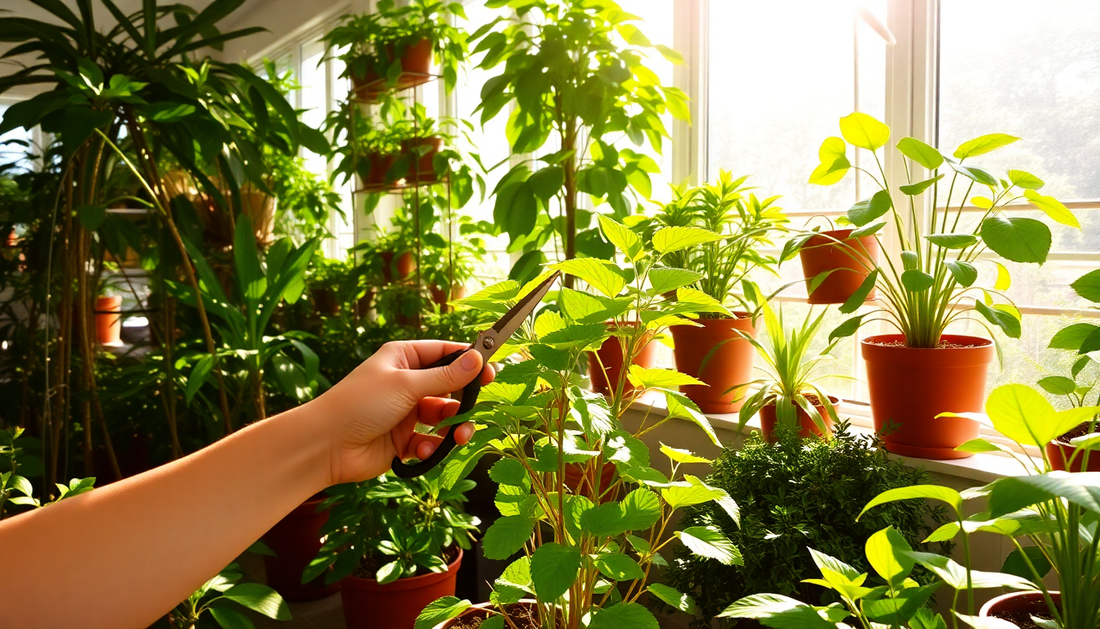
Banish Black Mold: A Guide to Keeping Your Indoor Plants Healthy
As a passionate plant parent, there's nothing more frustrating than discovering a dreaded black mold infestation on your beloved indoor greenery. This unsightly fungal growth can not only detract from the aesthetic appeal of your plants, but it can also pose a serious threat to their overall health and well-being.
Fortunately, with the right knowledge and a few simple steps, you can effectively combat black mold and keep your indoor plants thriving. In this comprehensive guide, we'll delve into the causes of black mold, explore proven methods for its removal, and share valuable tips to prevent future infestations.
Understanding Black Mold on Indoor Plants
Black mold, also known as sooty mold, is a common fungal disease that can affect a wide range of indoor plants. This type of mold typically appears as a dark, powdery or velvety coating on the leaves, stems, and even the soil of your plants.
The primary cause of black mold is the presence of honeydew, a sticky, sugary substance secreted by sap-sucking insects such as aphids, mealybugs, or scale insects. These pests feed on the plant's sap, and the excess honeydew they leave behind provides the perfect breeding ground for the black mold to grow.
In addition to the unsightly appearance, black mold can also interfere with the plant's ability to photosynthesize, leading to stunted growth, discoloration, and even the eventual death of the plant if left untreated.
Identifying and Treating Black Mold
The first step in tackling a black mold problem is to accurately identify the issue. Look for the telltale signs of a black, powdery or velvety coating on the leaves, stems, or soil of your indoor plants. If you notice any suspicious-looking insects, such as aphids or mealybugs, it's a good indication that the mold is a result of their presence.
Once you've confirmed the presence of black mold, it's time to take action. Here are some effective methods for removing and preventing the spread of this fungal disease:
1. Manually Remove the Mold
One of the simplest and most straightforward ways to address black mold is to physically remove it from the affected plant parts. Gently wipe down the leaves, stems, and soil with a clean, damp cloth or paper towel, taking care to remove as much of the mold as possible.
2. Use a Homemade Fungicide
Create a natural, DIY fungicide by mixing one part baking soda, one part vegetable oil, and ten parts water in a spray bottle. Shake the mixture well and mist the affected areas of your plant, making sure to cover both the top and underside of the leaves. The baking soda and oil combination can help to inhibit the growth of the black mold.
3. Treat with a Commercial Fungicide
If the black mold problem persists or is particularly severe, consider using a commercial fungicide specifically formulated to target sooty mold and other fungal diseases. Always follow the instructions on the product label and test the fungicide on a small, inconspicuous area of the plant first to ensure it doesn't cause any damage.
4. Address the Underlying Cause
To prevent the recurrence of black mold, it's essential to address the root cause of the problem – the presence of sap-sucking insects. Carefully inspect your plants for any signs of pests, such as aphids, mealybugs, or scale insects, and take appropriate action to eliminate them.
This may involve using insecticidal soap, neem oil, or introducing beneficial insects like ladybugs or lacewings to your indoor garden. By removing the source of the honeydew, you'll effectively eliminate the food source for the black mold, helping to prevent future infestations.
Maintaining a Healthy Indoor Garden
In addition to treating and preventing black mold, it's crucial to maintain a healthy indoor garden environment to support the overall well-being of your plants. Here are some tips to keep your indoor plants thriving:
Provide Proper Lighting
Ensure your indoor plants are receiving the appropriate amount of light, whether it's natural sunlight or artificial grow lights. Adequate lighting is essential for photosynthesis and can help strengthen the plant's immune system, making it more resistant to fungal diseases.
Maintain Proper Humidity Levels
Black mold thrives in environments with high humidity. Use a dehumidifier or mist your plants regularly to maintain optimal humidity levels, typically between 40-60%.
Practice Good Watering Habits
Overwatering can lead to a host of problems, including the development of black mold. Water your plants only when the soil is partially dry, and be mindful of the specific needs of each plant species.
Provide Adequate Airflow
Stagnant air can contribute to the growth of black mold. Ensure your indoor plants have access to good air circulation, either through the use of fans or by strategically positioning them near open windows or vents.
Fertilize Regularly
Healthy, well-nourished plants are better equipped to fend off fungal infections. Fertilize your indoor plants according to their specific needs, using a balanced, high-quality fertilizer.
By following these guidelines and implementing the strategies outlined in this guide, you can effectively banish black mold from your indoor garden and keep your beloved plants thriving for years to come.
Conclusion
Dealing with black mold on indoor plants can be a frustrating experience, but with the right knowledge and a proactive approach, you can reclaim the health and beauty of your indoor garden. Remember to stay vigilant, address the underlying causes, and maintain a healthy growing environment for your plants.
With a little effort and dedication, you can enjoy a lush, vibrant indoor oasis, free from the unsightly and damaging effects of black mold. Happy gardening!







No comments